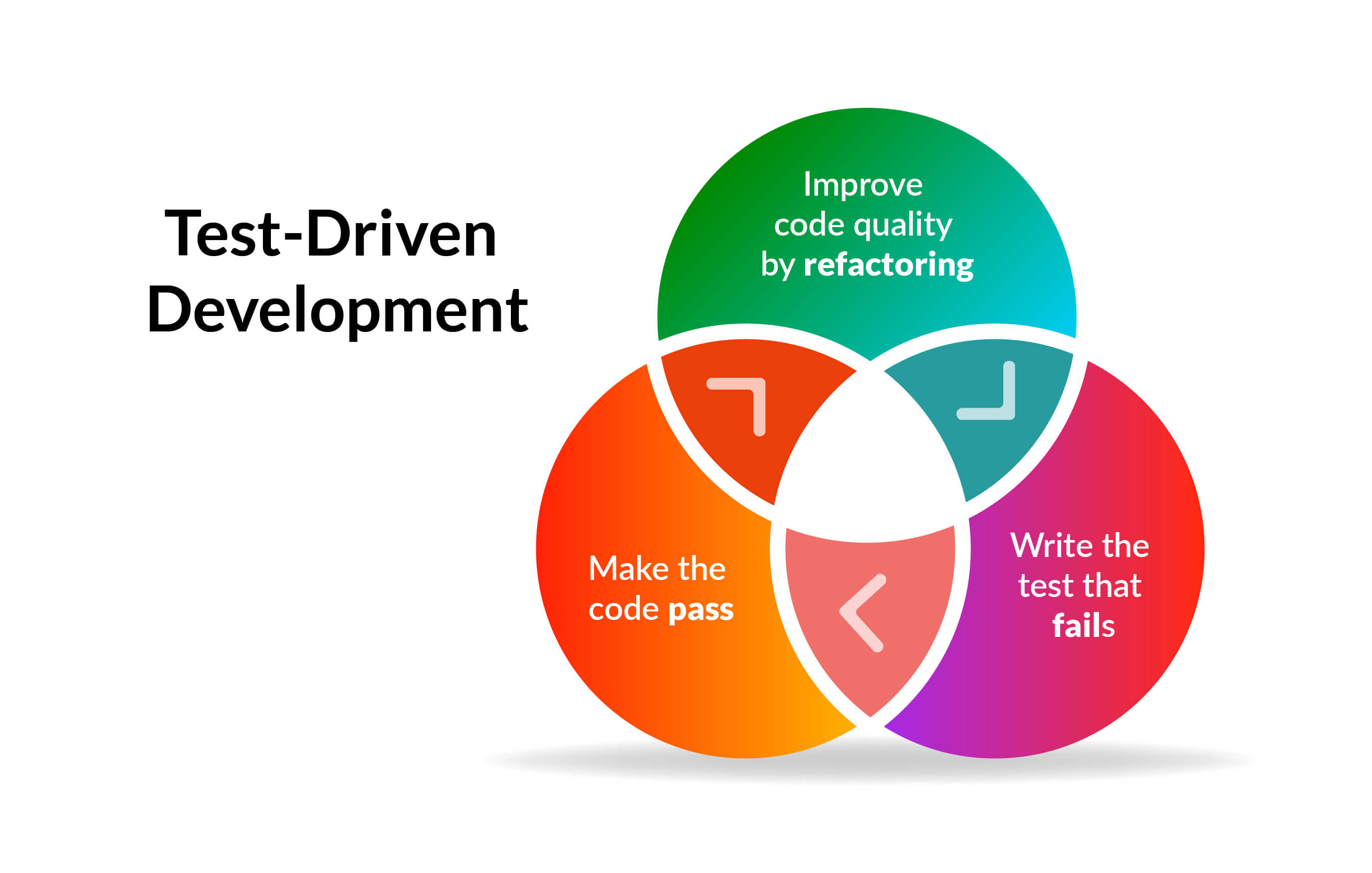Challenge of the software development process
 If you want to transfer money from your mind to your bank account you’ll need a plan, right? Imagine yourself entering the bank and saying “Hi, guys! I imagine myself earning a million dollars. Put it on my account, please.” Whoops! It turns out to be impossible. This is often the case of the development process when testing the application is conducted after the last stage of development.
If you want to transfer money from your mind to your bank account you’ll need a plan, right? Imagine yourself entering the bank and saying “Hi, guys! I imagine myself earning a million dollars. Put it on my account, please.” Whoops! It turns out to be impossible. This is often the case of the development process when testing the application is conducted after the last stage of development.
Instead, it’s much easier to implement the plan that contains small steps and is tested before the implementation. Model the situations where your plan fails and continue to do so until it turns into a success. That’s how the TDD process works.
TDD - first break, then build
Test-Driven Development (TDD) is a process of software development that demands writing of tests prior to the writing of application code. TDD fundamentally changed approach to the developing process and started applying tests not only for the verification of the written code but as the first and essential step of application building.
TDD is performed as a set of cyclic actions:
Write a test
First, you should dive deep into the requirements of your application and divide them into the most simple parts. The smallest is the test coverage the better. Each test must concern very limited scope and describe only one feature that needs to be implemented.
Run the test that fails
Since the test is written before the actual code exists, it will definitely fail. It is essential to run all the tests and verify that only the newest one fails. It is proof that all previously written code is working correctly. Moreover, this step will ensure that test doesn’t pass mistakenly, still requires a new code, and tests the right feature.
Write minimal code to pass the test
A programmer on this stage writes the bare minimum of code to implement the feature and pass the test successfully. This code is not final and will be modified on the next stages.

Pass all tests
The developer checks if a new test along with all previous ones succeeds. This step verifies that written code meets all test requirements and doesn’t cause any other tests to fail.
Refactor
Refactoring is the process of code restructuring and optimization. Code is made simpler and more comprehensible.TDD encourages and aids refactoring. In this way, code guidelines are met and code is neatly organized at the same time.
Repeat the cycle
A programmer produced a working code for a certain feature. But test-driven development is a cyclic process and programmer needs to define a new feature and start the process by writing a new test for it.
Is TDD worth the effort?
We know, we know. It looks like a loss of time on something that is known to fail, it may be time-consuming, it works against your intuition, and you have no idea of how to do that. But that’s normal. That’s how most people feel when they start doing something new and unknown. And let's be honest, these are not the reasons for not improving your development process. Just imagine. You put an enormous amount of money on the development of the application of your dreams. You spend days and nights to implement all desired features. You google every challenging task that you don’t know how to code. And in the end, you get a project that crashes, and crashes, and crashes over again. Such a situation is impossible with the Test-Driven Development procedure.

Just have a look at the gains of TDD implementation:
- Full code coverage. There are tests for all production code that can be run at any time and verify that code changes don’t intervene with the work of the application. Therefore, every code line is executed, tested and used in the application.
- Detailed documentation. Since the tests describe how the app should work and ensure that code meets requirements, it can be a form of documentation. Usually, tests are simple to read and unambiguous. They can’t be outdated because the production code passes them.
- Reduced debugging time. When a programmer has a test and uses it every few steps, the code has fewer defects and debugger is used less frequently that improves code quality and reduces the time for debugging.
- User-friendly approach. When programmers write tests before the code they have to put themselves into the user’s shoes and make an API easy and convenient to work with. It improves the resulting design and helps to achieve aim using the shortest path.
- Saved costs in the long run. As far as you get already maintainable and flexible code, your solution is reliable for further enhancements, and the documentation is ready for any other usage you save your budget while final testing and maintenance. The IBM Systems Science Institute depicted that the development without TDD makes it costly on the stage of maintenance, which would be much cheaper on the stage of pre-writing code testing.
Are you ready?
We believe now you are prepared at least to try out this method of Agile development methodology. We hope you will get used to it and make it a routine to write tests before the application code. Contact us if you need any further information or you want to develop your application in this way.
Oh, almost forgot. Here are the related topics if you want to learn more:
